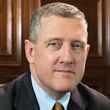Is Inflation on the Horizon for the U.S. Economy?
In recent months, people have been talking more about the potential for inflation to pick up, which would be a different situation from what the U.S. has seen for many years. Since the Federal Open Market Committee (FOMC) adopted an inflation target of 2% in January 2012, inflation (as measured by the year-over-year percentage change in the personal consumption expenditures price index) has averaged 1.4%.This is the average from January 2012 through February 2021. The economic shock from the COVID-19 pandemic sent inflation to a low level last spring, and while it has increased over the past year, it remains below 2%.
However, inflation does look like it could move somewhat higher over the next year or so. In this article, I discuss ideas about why inflation might be on the horizon for the U.S. economy:
- A monetarist, or money-based, theory, which focuses on increased money supply
- A fiscal theory, which is related to the size of federal debt and deficits
- A Phillips curve theory, which emphasizes a strong economy putting upward pressure on prices
Although recent years have been challenging for these theories of inflation, all three are currently suggesting some inflation pressure ahead.
A Monetarist Theory
Nobel Prize-winning economist Milton Friedman taught us that inflation is a monetary phenomenon, and that tracking inflation requires tracking money growth. A conventional measure of the money supply is the M2 money stock, and M2 money growth has been off the charts since the pandemic began. So far in 2021, year-over-year growth rates have been 25% or higher.
The bottom line is that the growth of the nation’s money supply has been very high by historical standards. Even if the monetarist theory of inflation has not worked well in recent years, money growth over the past year has been so large that it could be a source of inflation pressure.
A Fiscal Theory
Those who favor the fiscal theory think that fiscal deficits can lead to inflation. In my view, while the empirical case has been harder to make for this argument, the current fiscal deficits in the U.S. are so large by historical standards that maybe now is the time for this theory to show its relevance.
The estimated value of all pandemic-relief U.S. fiscal policy, for instance, would be equivalent to about 28% of U.S. nominal GDP in 2019. This amount is enough to materially increase the debt-to-GDP ratio in the U.S. A fiscal theory of the price level would suggest that inflation will ramp up as a result.
A Phillips Curve Theory
The Phillips curve theory has played an important role in central banks’ decision-making in recent decades. This theory suggests that high levels of economic activity will put upward pressure on prices.
Some of that upward pressure could come through bottlenecks in supply chains, which we have certainly heard a lot about during the pandemic. Some pressure could also come through labor markets. Right now, labor markets are not yet fully recovered from the pandemic shock. However, as the pandemic wanes, labor markets could improve dramatically. Many businesses might be left scrambling for workers, which would likely put upward pressure on wages and, in turn, on prices.
Thus, the Phillips curve theory would also predict higher inflation on the horizon for the U.S., as forecasters are expecting a robust economy for this year.
Summary: Three Theories Point to Higher Inflation
Although empirically none of the three theories of inflation have been infallible, all three are currently pointing in the same direction—toward more inflation pressure in 2021 than the U.S. has experienced in recent years. Furthermore, all three are fueled by large increases in their featured variables: money supply growth, fiscal deficits and projected economic growth.
Fed’s New Monetary Policy Framework
Perhaps the most important reason why inflation might be headed higher than it has been since 2012 has to do with Federal Reserve policy. In August 2020, the FOMC adopted a new monetary policy framework, which changes how the Fed will respond to inflation.
The previous framework emphasized preemptive interest rate increases to mitigate incipient inflation pressures. In other words, the FOMC would act before actually seeing inflation rise in order to keep inflation under control. Such preemptive moves were part of the secret of success when the Fed was working to reduce inflation in the 1980s and 1990s.
Under the new framework, the FOMC will focus on hitting a 2% average inflation rate over time, meaning there will be more emphasis on making up for past misses on the low side by allowing inflation to run modestly on the high side for some time. Consequently, the FOMC will not be as preemptive as in the past in attempting to quell incipient inflation pressures. Instead of raising interest rates when higher inflation looks to be on the horizon, the FOMC is now more likely to allow inflation to develop to a certain degree and allow that to feed into inflation expectations. As a result, the U.S. could see somewhat higher inflation.
Given that inflation has generally been below the 2% target for many years, an inflation outcome modestly above 2% for some time would be a welcome development for the FOMC. Such an outcome would help the FOMC hit its inflation target on average over time.
Views expressed in Regional Economist are not necessarily those of the St. Louis Fed or Federal Reserve System.
For the latest insights from our economists and other St. Louis Fed experts, visit On the Economy and subscribe.
Email Us


